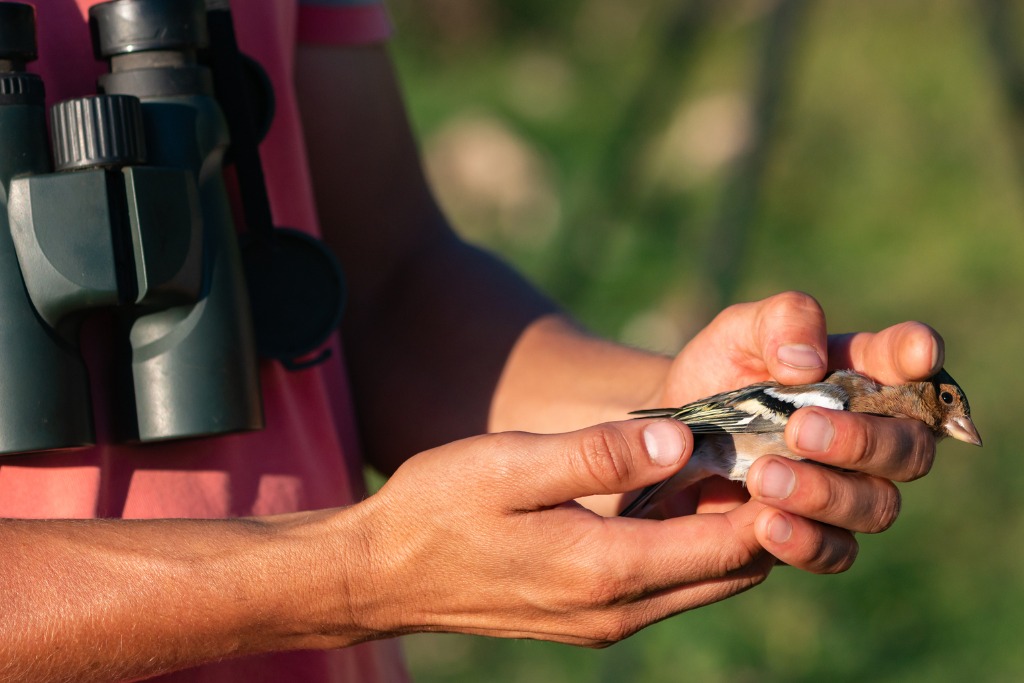
Person wearing binoculars holding a bird
Birding Buddies
Grade 1
Have you ever wondered how people keep track of animal populations? It takes a lot of people. They need to use good observation skills and mathematics to get a big picture of how groups of animals live in their environment. One example of the people who do this work are ornithologists. Ornithologists study birds. Their job is more than just birdwatching. They must understand how birds live in their environment and the important role birds play in nature’s balance.
Teacher's Guide and Related Standards
Students will be able to make observations of the work people do to estimate bird populations in order to describe the characteristics of an ornithologist.
- How do people know when a population of animals is going up or going down?
Outdoors Maryland Clip
- What is the job of an ornithologist?
- How do people count animal populations?
- How can anyone get involved in science?
Vocabulary
Supplemental Enrichment Activities
and Designing Solutions
Upcycling for Birds
Trash in the environment can cause all kinds of problems for wildlife including birds. What if the trash could be turned into something useful? Upcycling is a way to creatively reuse waste materials. Using available trash items, design and build a bird feeder that can be used at school or at home.
Watch the Birdy - Elinor Wonders Why
There are over 450 bird species in Maryland. Many of them look similar. Being a good birdwatcher takes practice in order to distinguish one sparrow from another. The Department of Natural Resources (DNR) has produced a “Guide to Birding in Maryland” (Guia de Observacion de Aves en Maryland). Close observations are needed to distinguish one bird from another. Sometimes this is by sight and sometimes this is by ear. Use the guide to start your own list of birds you have observed. Bird watching can become a lifelong hobby that will take you outside into Maryland’s great outdoors. Students can learn about bird watching by playing “Watch the Birdy.”
Project FeederWatch
Bird populations change throughout the seasons. Which birds visit the bird feeder in fall, winter, and spring? Understanding these patterns helps scientists keep track of bird populations. Cornell University’s Lab of Ornithology uses people interested in birds to support their scientific efforts. The FeederWatch program happens from November to April. People make observations at their homes or schools to assist the lab with monitoring bird populations across North America.
Career Connections